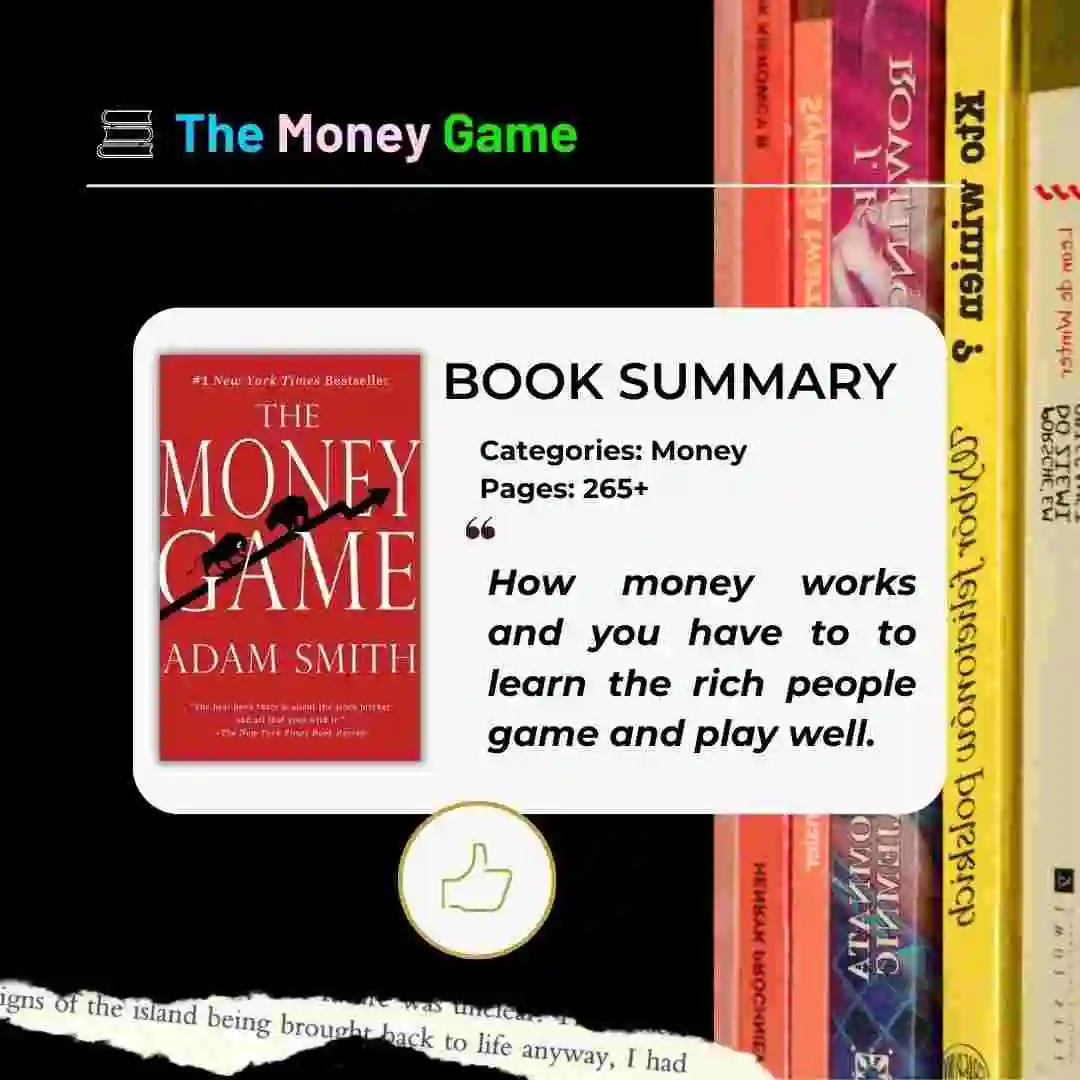Hello friends, in today’s blog, we see The Money Game Book Summary. so you will understand the money game and play for win. so let’s understand the financial game.
The Money Game Book Summary
“The Money Game” is a classic finance book written by George J. W. Goodman, under the pseudonym Adam Smith. Originally published in 1968, the book provides insights into the world of finance, investing, and the psychology of the market.
Below is a summary of key concepts:
1. The Nature of the Game:
– Goodman explores the metaphorical “game” of money, emphasizing that the financial markets are more than just a rational, economic system. The markets involve human emotions, perceptions, and irrational behavior.
2. Randomness and Uncertainty:
– The author discusses the role of randomness and uncertainty in financial markets. He notes that predicting market movements with absolute certainty is nearly impossible, and investors should be aware of the inherent unpredictability.
3. Psychology of Investing:
– Goodman delves into the psychological aspects of investing, highlighting the impact of human emotions on decision-making. He explores how fear, greed, and herd behavior can influence market trends and individual investment choices.
4. Speculation vs. Investment:
– The book distinguishes between speculation and investment. Speculation involves betting on short-term price movements, often driven by emotions, while investment involves a more long-term, fundamental approach.
5. Market Players:
– Goodman introduces various market players, including individual investors, institutional investors, and market professionals. He explores the dynamics of how these players interact and influence market trends.
6. The Role of Information:
– The author discusses the role of information in the financial markets. He notes that markets react not just to new information but also to how that information is interpreted and disseminated.
7. The Myth of Experts:
– Goodman challenges the notion of financial experts who claim to predict market movements accurately. He argues that predicting the market is inherently uncertain, and even the most experienced experts cannot consistently forecast the future.
8. Market Bubbles and Crashes:
– The book reflects on historical market bubbles and crashes, illustrating how market sentiment and collective behavior can lead to extreme volatility. Goodman emphasizes the cyclical nature of financial markets.
9. The Long-Term Perspective:
– Despite the short-term fluctuations and uncertainties, the book encourages investors to adopt a long-term perspective. Goodman suggests that focusing on fundamentals and avoiding reactionary decisions based on short-term market noise can lead to more successful outcomes..
10. Investing Wisdom:
– The book imparts timeless investing wisdom, advocating for prudence, diversification, and a thoughtful approach to risk. Goodman emphasizes the importance of understanding one’s own risk tolerance and investing within those boundaries.
“The Money Game” remains relevant as a classic exploration of the psychological and behavioral aspects of finance. It provides valuable insights into the challenges and opportunities of navigating the complex world of money and investing.
Readers are reminded of the unpredictable and often irrational nature of financial markets and encouraged to approach investing with a blend of realism and long-term vision.
View this post on Instagram
Read More books

[…] the Money Game Book Summary […]
[…] the Money game book summary […]
[…] The Money Game book summary […]
[…] The Psychology of Money […]
[…] Money Game book summary […]
[…] The Money Game book summary […]